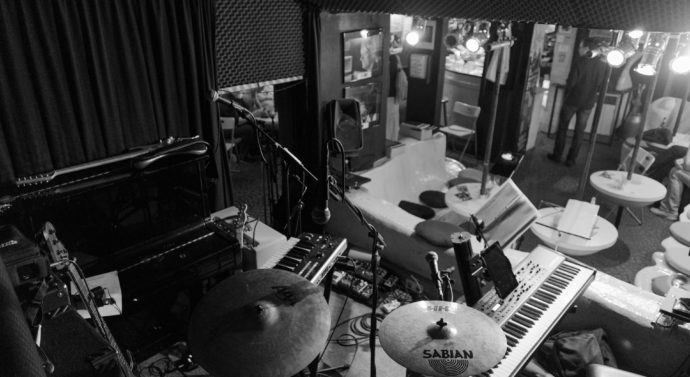
Mac’s Tracks: Women in the rock scene
Editorial September 28, 2018, Comments Off 91The following is an edition of Mac’s Tracks, The Mirror’s music column. All views, thoughts and opinions belong solely to the author and do not necessarily represent those of the Drury Mirror.
Pop music is brimming with female talent, from Ariana Grande’s soaring notes to Beyonce’s, well, everything. Pop punk claims Paramore’s Hayley Williams and the 1980s gave rise to Pat Benatar and Madonna. Women are visible in music, often topping the charts and setting records. But despite constant groundbreaking success, there are some genres that still aren’t so accepting.
When people think of rock music, what immediately comes to mind varies between classic acts like the Rolling Stones and Lynyrd Skynyrd to more modern bands like Nirvana and Queens of the Stone Age. It’s usually loud, always innovative and creates works of art out of the standard lineup of guitars, bass and drums. Rock has been the anthem of rebellion, change and revolution at various points in history and has faced criticism since Elvis’ first television appearance. There are some places, however, where it sticks to unnecessary standards.
A bigger dream for female artists
Rock music has not freed itself from its status as a male-dominated genre. Sure, women are credited as singers and are occasionally seen as playing an instrument, but the average listener wouldn’t be able to name half as many female rockers as men. In fact, I was forced to evaluate my own lack of knowledge while working on this article.
From the 1960s to the 1980s, women came into the rock scene slowly but surely. Doo-wop and Motown groups like The Supremes and The Ronettes turned to the hits of Heart, Blondie and Fleetwood Mac. Their vocals were unforgettable and, to this day, continue to receive regular play on radio stations. New Wave introduced Grace Jones, the women of the B-52s and Siouxsie Sioux, all of whom established their own unique sounds and left deep impressions in their era and beyond.
The outgrowth of punk rock in the 1970s held a begrudging spot for women who had to carve it there themselves. Poly Styrene of X-Ray Spex, Kim Gordon of Sonic Youth and Patti Smith are just a few names worth noting. Even here, in a subgenre that espoused equality and dissatisfaction with the status quo, women were not encouraged to attend shows, much less be on the stage.

(Photo via Maclen Johnson)
A Struggle for Decades
The Riot Grrrl movement of the early 1990s was a catalyst for woman rockers and was inspired by the punk precedents a decade earlier. Famously attributed to Bikini Kill and the Riot Grrrl Manifesto, this underground feminist punk movement began in the Pacific Northwest and refused to stay quiet. Women broke away from the perception that they were girlfriends of male band members and started pushing out their own music.
The comparison and condescension antics of music journalism also shut female musicians out. When an artist breaks big, like Janis Joplin or Joan Jett, the next woman reviewed is bound to be described as a modern version of them. Women are often seen as not being allowed to be original acts. Worse, they face the back-handed compliments of being pretty good “for a group of chicks” or even threats against their well-being simply for existing in a space where male fans do not think they have the right to be.
In an interview with Huffington Post, Lydia Night of The Regrettes addressed sexism in the scene. Even though there are many good people working with the band before sets, Night explained, “There are so many annoying sound people who just assume that … oh, of course Maxx knows how to set up his drums, but she must not know how to set up her amp.” Maxx Morando is the band’s only male member.
This is not to say that rock is inherently a bad genre or that other types of music are better just because women are present in them. The standard of women existing as sexual first and talented second is still alive, as seen in Rolling Stone magazine’s seeming inability to do a full-body shot of a woman that isn’t nude.
Luckily, as with all things, time and progress march on. Heavy changes need to be made to the music industry to afford women the same respect their male counterparts get, but the future of all-female bands is growing brighter.
This week’s Mac’s Tracks features bands that are all – or almost all – women. Listen to Mac’s Tracks on Spotify now.
Do you disagree or think there’s more to the story? Did you and your friends ever try to start up a garage band? Add your thoughts below.
Written by Maclen Johnson.